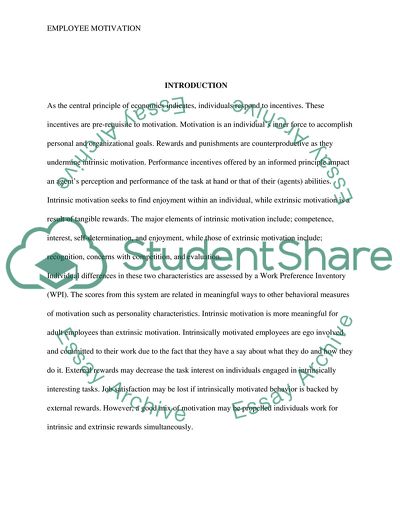Cite this document
(Intrinsic and Extrinsic Motivation Essay Example | Topics and Well Written Essays - 1250 words, n.d.)
Intrinsic and Extrinsic Motivation Essay Example | Topics and Well Written Essays - 1250 words. https://studentshare.org/education/1812560-intrinsic-motivation-is-more-meaningful-for-adult-employees-than-extrinsic-motivation
Intrinsic and Extrinsic Motivation Essay Example | Topics and Well Written Essays - 1250 words. https://studentshare.org/education/1812560-intrinsic-motivation-is-more-meaningful-for-adult-employees-than-extrinsic-motivation
(Intrinsic and Extrinsic Motivation Essay Example | Topics and Well Written Essays - 1250 Words)
Intrinsic and Extrinsic Motivation Essay Example | Topics and Well Written Essays - 1250 Words. https://studentshare.org/education/1812560-intrinsic-motivation-is-more-meaningful-for-adult-employees-than-extrinsic-motivation.
Intrinsic and Extrinsic Motivation Essay Example | Topics and Well Written Essays - 1250 Words. https://studentshare.org/education/1812560-intrinsic-motivation-is-more-meaningful-for-adult-employees-than-extrinsic-motivation.
“Intrinsic and Extrinsic Motivation Essay Example | Topics and Well Written Essays - 1250 Words”. https://studentshare.org/education/1812560-intrinsic-motivation-is-more-meaningful-for-adult-employees-than-extrinsic-motivation.


